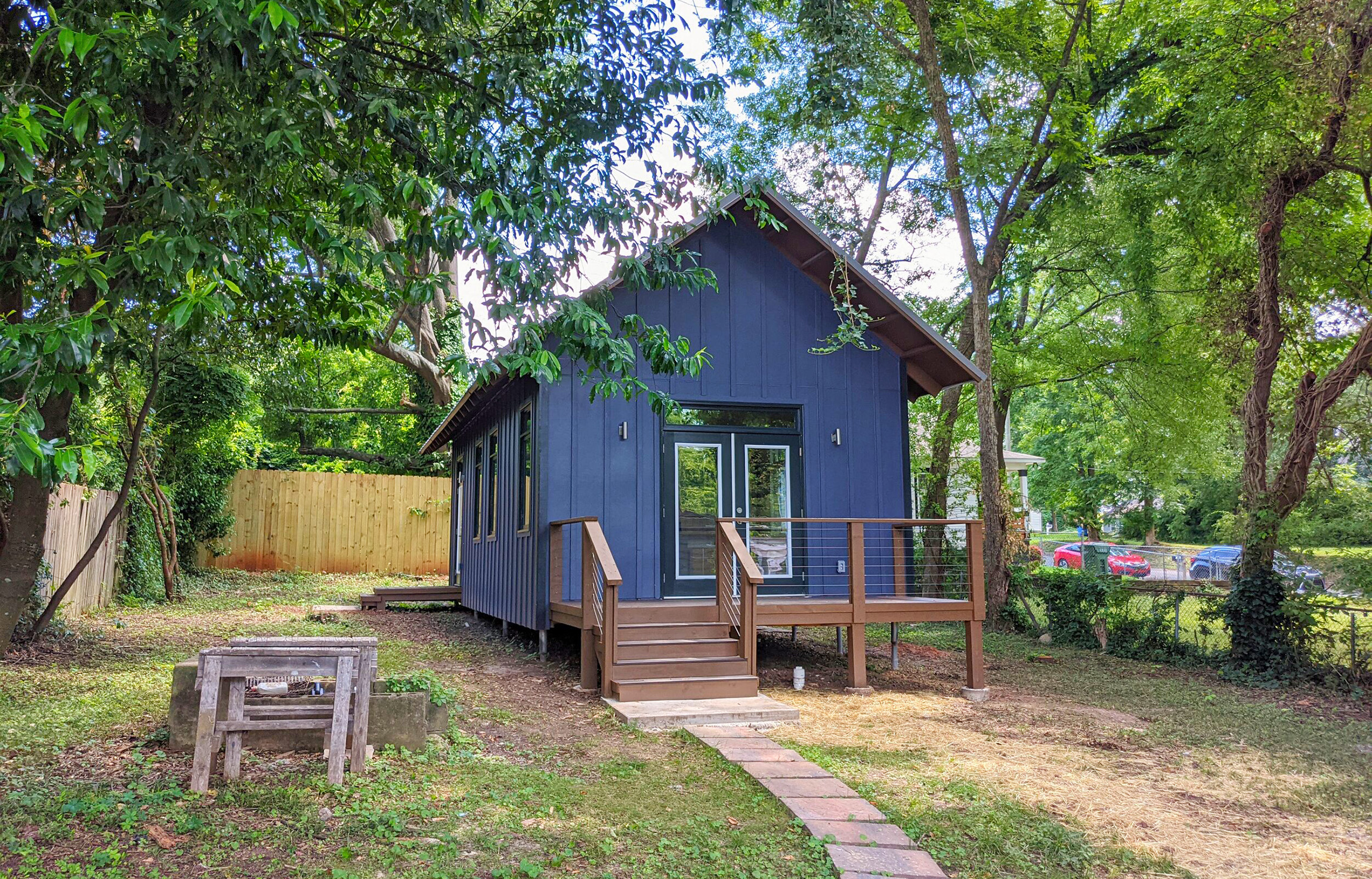While walking to school as an architecture grad student at Georgia Tech, Pavan Iyer noticed what he calls urban residual spaces: unused areas such as underpasses, dead-end alleys, and oddly shaped lots. For his thesis, he explored these leftover city spaces as opportunities to develop equitable housing.
One residual space in particular—the backyard—seemed to hold a lot of potential. “Backyards in urban areas tend to be wasted space and an inefficient use of land,” Iyer says.
In 2018, after earning his master’s degree, Iyer set out to turn his academic ideas into real-world action. He founded his Atlanta-based architecture, design, and real estate firm, eightvillage. And for its first development project, eightvillage launched Backyard ATL—an initiative that designs, builds, and manages accessory dwelling units (ADUs) in Atlanta homeowners’ backyards.
ADUs AS AN AFFORDABLE HOUSING SOLUTION
Recently, eightvillage was named one of 10 finalists for the 2022 Ivory Prize, a national award that recognizes ambitious, feasible, and scalable solutions for housing affordability.
“We create ADUs in the cracks of the urban fabric: the backyards,” Iyer says. He wants his ADUs to help create equity, build neighborhood wealth, and support mixed-income development in low- to moderate-income minority neighborhoods.
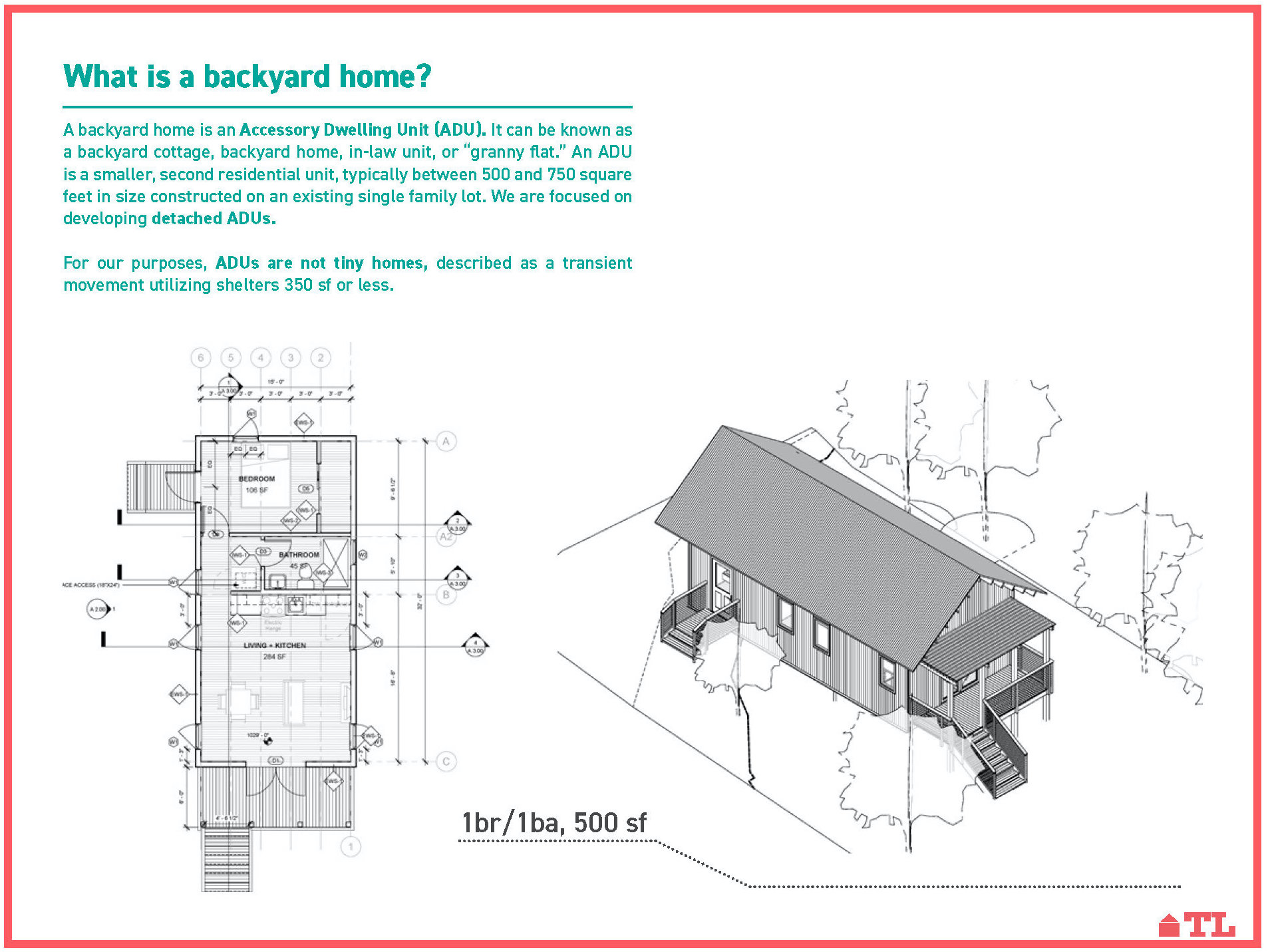
In partnership with Focused Community Strategies, a nonprofit that supports under-resourced Atlanta neighborhoods, eightvillage built its first three backyard ADUs in the Historic South Atlanta neighborhood last year. Now, eightvillage manages the rental units, while the homeowners, who also own the backyards, get a cut of the ADU rent. For this community, Iyer says, Backyard ATL generates not only more affordable housing options but also rental income for the homeowners so they can resist displacement by gentrification.
Iyer explains it this way: In lower- and middle-class neighborhoods undergoing rapid gentrification, homeowners face quickly escalating property values and taxes, while developers often replace older homes with new apartment complexes that target higher-income professionals. By contrast, ADUs provide greater housing density while also generating passive income that helps homeowners stay in place.
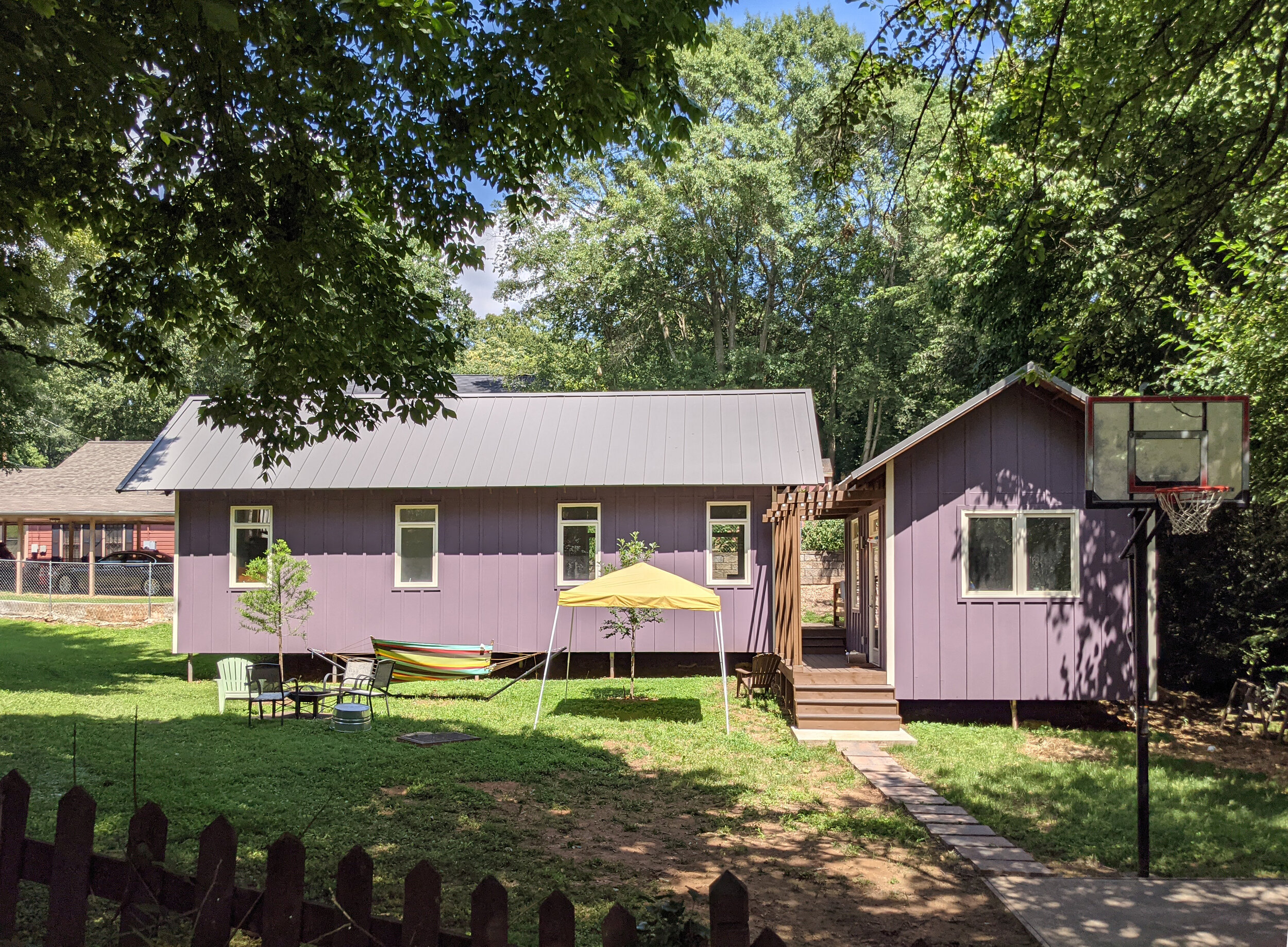
“That creates a healthier version of economic development that doesn’t happen in the traditional model with fast gentrification, where people get displaced,” he says.
With eightvillage’s ADUs, homeowners receive 10% of the rental revenue, which ranges from $1,100 to $1,300 a month (including all utilities). “It doesn’t build wealth for the homeowner, but it does offset the property taxes and mortgage burden,” Iyer says.
Homeowners also can purchase the units: “Our goal is not to hold the ADUs forever but to help the homeowners eventually own them in a shorter time and more affordably than if they took on the construction themselves,” he says.
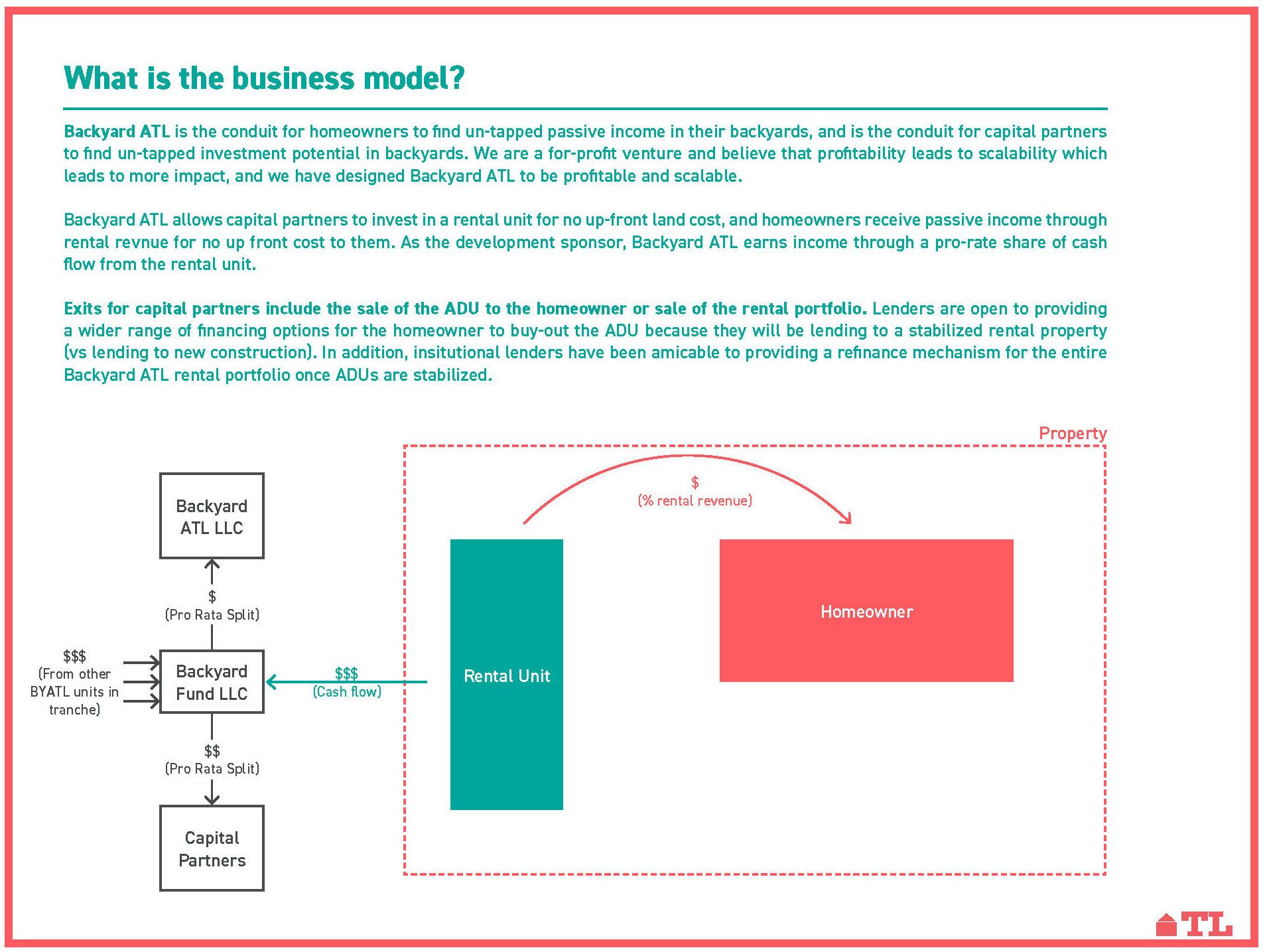
With his first three units, Iyer had to figure out how exactly to build ADUs in people’s backyards. He considered then rejected a fully modular approach: The delivery and installation of prefab ADUs would be challenging on narrow residential streets, and homeowners understandably might balk at the thought of ADUs being craned over their properties.
But Iyer also couldn’t take a traditional construction approach. Driveways and gates allow only so much access space for construction crews and equipment.
So Iyer instead decided to build the units’ foundations atop helical piers: steel, screw-like pins that get driven deep into the ground. The helical piers required only a couple of crew members and equipment that’s only a few feet wide. Compared to traditional methods, the helical piers allowed the foundation to be built much more quickly and quietly, without cutting down trees or ripping up yards.
Building the foundations for Backyards ATL’s first three units took just one day. “The helical piers will help a lot to do these ADUs at scale,” Iyer says.
In addition, the energy-efficient units have consistent structural framing and standard but easily modifiable shotgun designs that simplify the construction process. The units typically range from 500 to 700 square feet, with one or two bedrooms and one or two bathrooms.
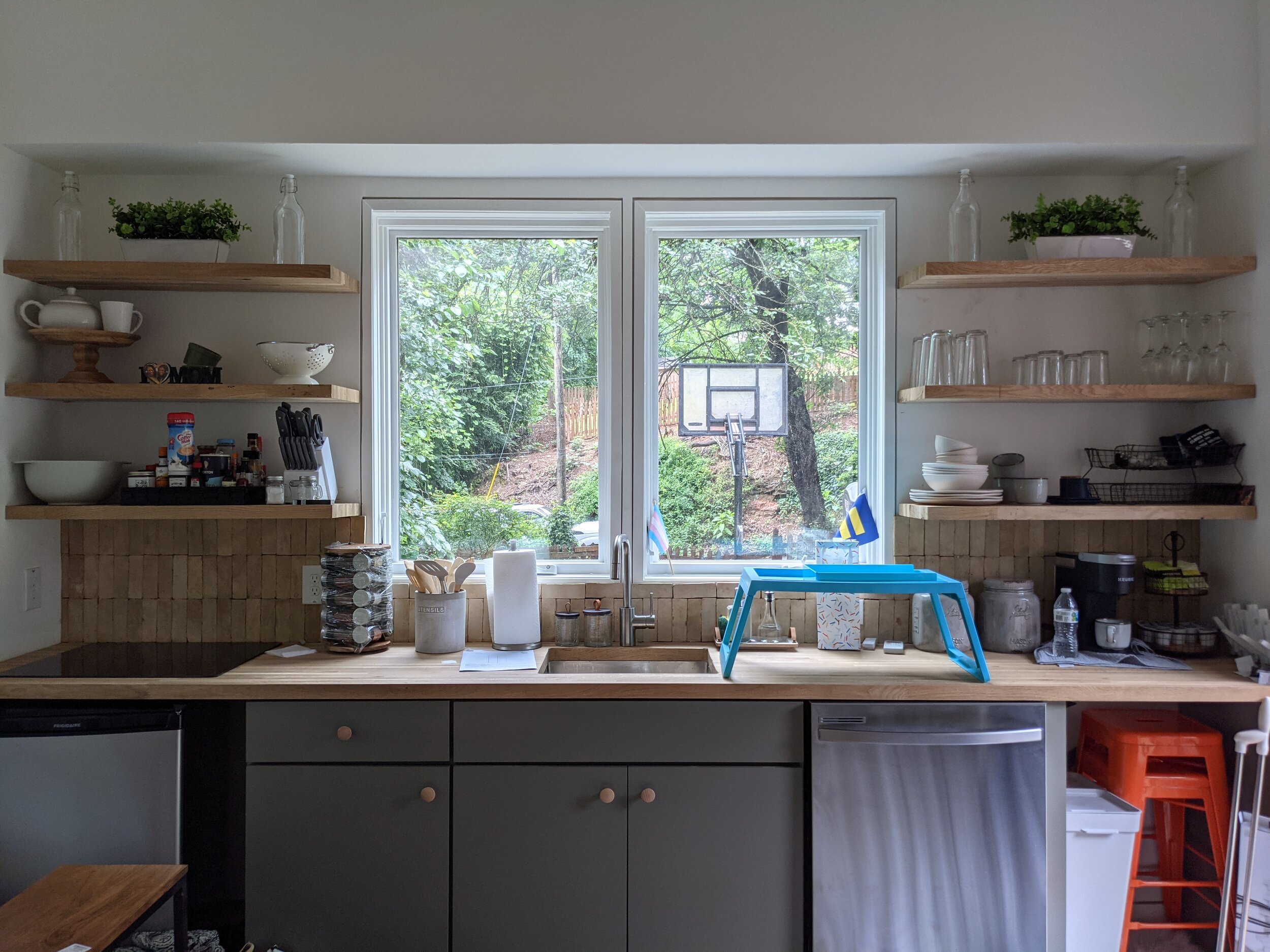
Now, Iyer is planning to build 30 more backyard ADUs in Grove Park, a predominantly Black neighborhood where Microsoft is building a new campus. For this community, where Iyer says there’s a concern of not having enough rental options, his ADUs could house and preserve lower- to middle-class renters.
From there, Iyer wants Backyard ATL to expand throughout the metro Atlanta region.





